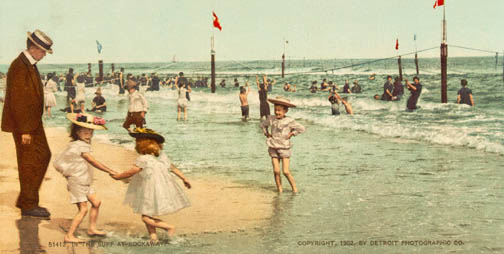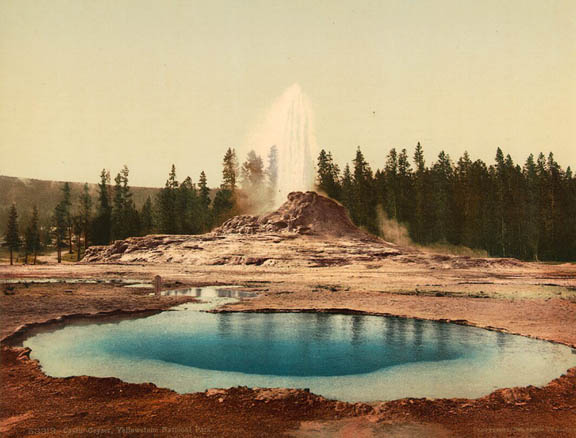

Click on pics for whole collection
First of all, is it “photochrome” or “photochrom”?
The process was initially developed in Switzerland and was spelled without an “e”, so the correct original spelling was actually “photochrom”. Once the process was introduced in America, the “e” was added to aid pronunciation.
A Photochrom is a color photo lithograph, produced from a black-and-white negative. The final prints were created using different color impressions from multiple lithographic stones. The stones used by the Detroit Photographic Company were imported from Bavaria and coated with a special Syrian ‘asphaltum’ substance that would be chemically sensitized to light, put in contact with a photographic negative, exposed to the sun for up to several hours, then “developed” in oils of turpentine.
The areas of the very thin asphalt gel most exposed to light would harden, becoming insoluble; the less exposed residue would be washed away. Tonal values of the remaining positive image could be manipulated by varying the chemistry and development times. Technicians could do the equivalent of burning and dodging by retouching the brush and polishing with fine pumice powder. The final steps in preparing the stone were an acid etch to bond the remaining image with its very fine grain, and a glycerin bath.
A separate stone would be made for each color to be used. A minimum of four stones and as many as fourteen stones might be used for a given image. A transparent ink would be applied to the stone, then transferred to high-quality paper whose texture resembled the smooth photographic printing paper of the day.
The final steps was a varnish which gave each print added depth and richness. Because the process involved a number of crafts people and because the stones had to be re-ground occassionally substantial variations may be noted between different editions of the same image over the years.















I’d seen some examples of these years ago and they remain absolutely amazing. I hadn’t realized how much work went into their construction until this article. Wow !!
My God…..like #1….I never realized how work intensive these were. Geez, we are an inventive bunch when we aren’t killing each other in a war.
When I see the top photo I see those kids frolicking in the water and enjoying their time alive. Every single one of those people in that photo is DEAD today including the little girl in the hat who’s peering at us from the beyond.
#3, no, they live on.
Their souls were seen and captured for posterity by the camera. They were brought back to life through the reproduction. They can’t die as long as there is a copy of their likeness.
Good find Dave.
I enjoy reviewing these old techniques. It reminded me of this find from a year ago.
http://www.dvorak.org/blog/?p=3360#comments
This looks to be much more labor intensive and individualistic though.
More, please sir, give us more.
Fantastic site! Thanks!